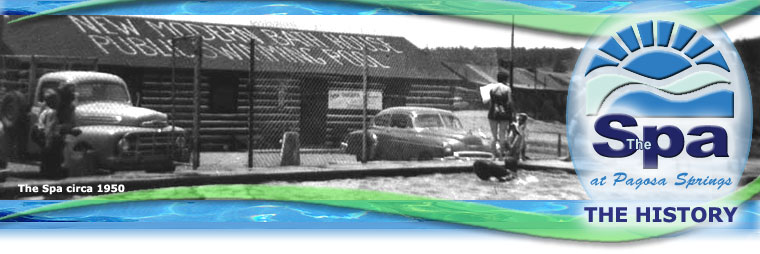|
Native American History of the Pagosa Hot Springs
There are several different historical legends and folk tales regarding the Hot Springs. Below are the two most popular stories.
Heal Us Legend
Apparently there was a plague that afflicted the Ute Indians that even the Medicine Men had no power to cure. After many died, the tribe called a meeting on the banks of the San Juan River. They built a huge fire and danced and prayed together all night long. When they awoke the next morning, there was a pool of boiling water where the fire had been.
Upon bathing and drinking from this pool, the Utes were healed of their sickness and the plaque ended. From then on, the spring was considered sacred and called "Pahgosa", meaning healing water.
Utes and Navajo Confrontation Legend
Another tale recounts a fight to the death between the Utes and the Navajo to determine the ownership of the springs. Confrontation had marked these two tribes relationship for many years. Both recognized the San Juan River as a dividing line between their nations, but the springs was still a source of contention.
They decided each tribe would select one man to represent each side. The dispute would be settled by whoever emerged victorious, and the winner would win the possession of the Great Pagosa Hot Spring.
The Navajos selected a huge man who was famous for his fighting ability. Colonel Albert Pfeiffer volunteered to fight for the Utes. He was an Indian agent, and a friend of Col. Kit Carson, as well as an enemy of the Navajo and an adopted member of the Utes (having married into the tribe). His one request was that he could elect the weapons they would use, and he were chose Bowie knives.
They met unclothed, except for their breechcloths, and fought with one hand tied behind their backs. The Indian had the advantage in size, and the Colonel knew it. Suddenly, however, when the Colonel was some feet from his adversary, he made a very quick movement with his arm, his knife left his hand and was buried in the enemy's heart.
The Utes were victorious, the Navajo withdrew, and never more did they lay claim to the "Great Pahgosa.”
Top of Page
|
